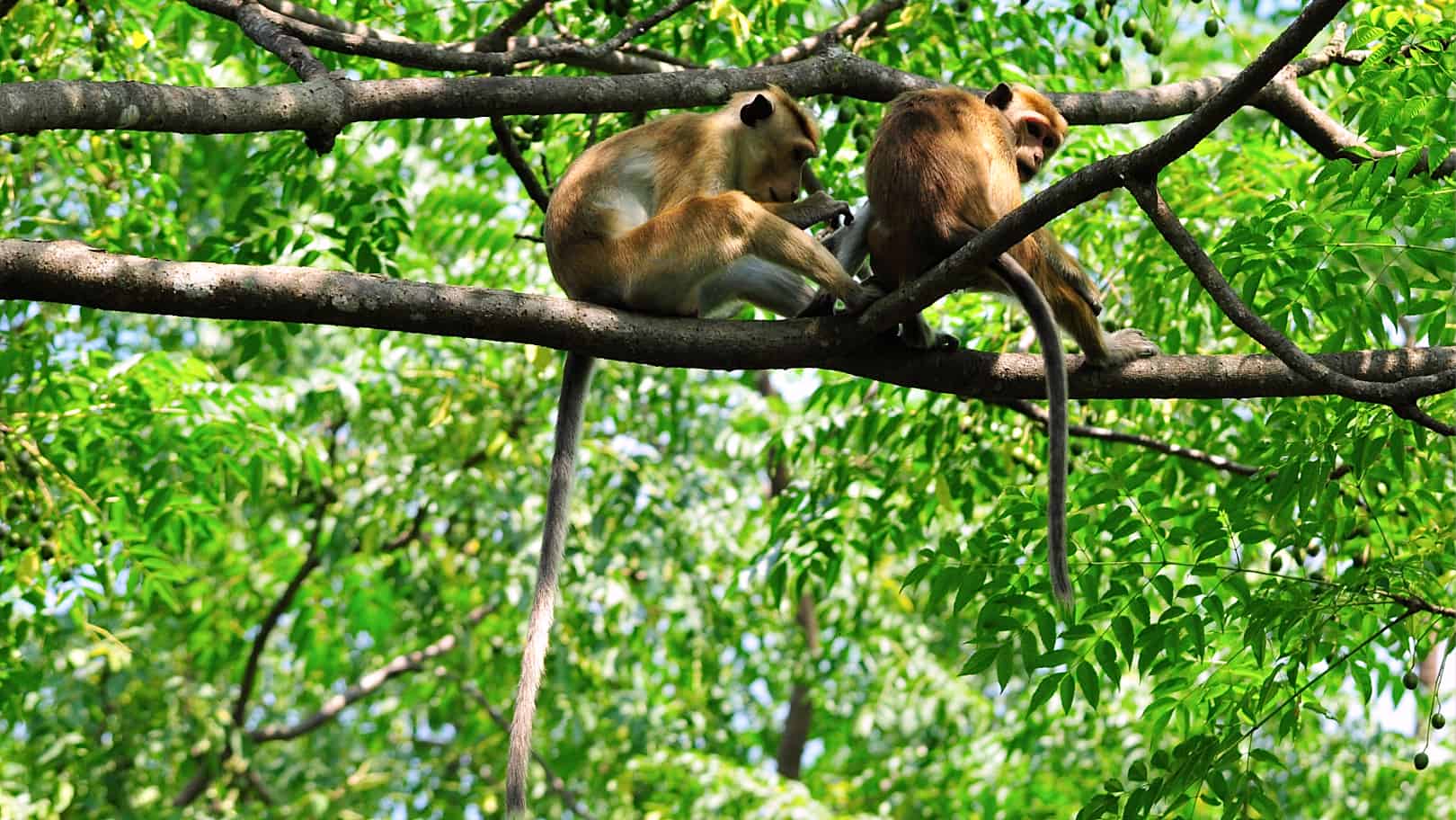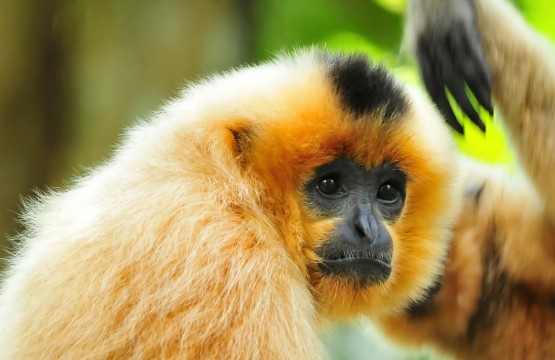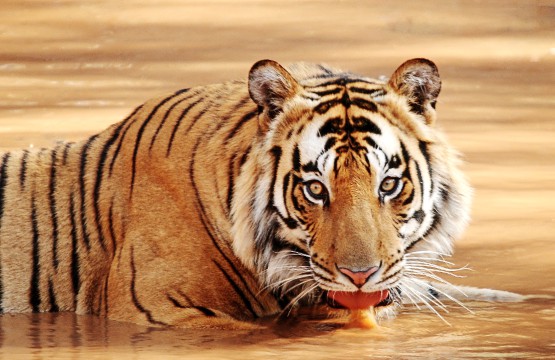Sri Lanka Wildlife Special
Sri Lanka is listed as having the highest species density in Asia, defined as the number of living species per 10,000 km² and on this tour we will be taking full advantage of its richness and biodiversity of wildlife. As the tour name indicates we will be visiting a number... More
Sri Lanka is listed as having the highest species density in Asia, defined as the number of living species per 10,000 km² and on this tour we will be taking full advantage of its richness and biodiversity of wildlife. As the tour name indicates we will be visiting a number of national parks and reserve in this trip.
Beginning our journey from Negombo going up north to Wilpattu National park and coming down south to Habarana, Minneriya, Wasgamuwa National parks then to south-west to Gal Oya national park. Afterwards go down south-west to Lunugamvehera national park, Udawalawe national park and finally to Sinharaja Forest Reserve. We drive up north from Sinharaja to Colombo where our wildlife trip ends. If you love wildlife or nature in general then look no further then this wildlife special tour in Sri Lanka!
LessHighlights
- Explore Sri Lanka’s finest National Parks – Wilpattu National Park, Minneriya National Park, Wasgamuwa National Park, Galoya National Park, Udawalawe National Park, Yala National Park, Lunugamvehera National Park, Sinharaja Rain Forest
- Colourful birds and butterflies with a rich flora
- Over 250 species of birds to be seen, including Blue-faced Malkoha, Serendib Scops Owl and more
- Very good chance to see the island’s 34 endemic bird species during our tour
- Over 20 species of mammal to be encounter including Indian Elephant, Sloth Bear, and Leopard
- Endemics Mammals such as Toque Macaque & Purple-faced Leaf Monkey
- Night drives or walks looking for Grey Slender Loris, Fishing and Rusty-Spotted Cats
- Explore verdant forests & habitats in search of Island’s endemics
- Visit to Archaeological sites at Sigiriya, Polonnaruwa and Habarana
- The experienced local expert Wildlife Tour Leader who has been involved in various wildlife expeditions in Sri Lanka and research projects.
Welcome to Sri Lanka! Upon arrival in Colombo a travel-to-nature Asia Tour guide/leader, who will accompany us throughout the tour, will be at the airport to greet and take us to our hotel which is about 15 km away and takes approximately 30 mins from the airport. Please look out for your name-card once you exit out of arrival area.
Rest of the day at leisure.
Accommodation: Goldi Sands Hotel
Meal: Dinner
After breakfast at the hotel, we will leave for Wilpattu National Park on the coastal road. On arrival at Wilpattu National Park we will be transferred to Big Game Campsite for accommodation in Camps. Lunch at the Campsite. Leave on a Game Drive by Safari Jeeps in Wilpattu National Park. Return to Campsite. BBQ Dinner.
Accommodation: Big Game Camp
Meals: Breakfast, Dinner
After breakfast at the hotel, proceed on a game drive to Wilpattu National park. Return to the campsite for lunch. Late afternoon leave on a Game Drive by Safari Jeeps in Wilpattu National Park.
The Wilpattu National Park – History and Geography
Wilpattu Sri Lanka located on the west coast of Sri Lanka, the Wilpattu National Park extends inland towards the ancient city of Anuradhapura in the heart of the Cultural Triangle. The Park is a fairly thick dry zone jungle interspersed with a number of flood plain lakes banked with delicate white sands. It boasts an impressive variety of flora in huge expanses of forest with varied wildlife.
A topographical feature particular to this part of the island is the abundance of villus or natural lakes – like basins. All bar two of the villus within the Park contain pure rainwater and support a vast range of resident and migratory water-birds.
The Wilpattu National Park is one that is steeped in history and legend. According to some identified ancient ruins, it is said that Queen Kuweni lived in the place now identified as Kalli Villu. Queen Kuweni is in essence the mother of the Sinhalese race as it is out of her marriage to Prince Vijaya (the first king of Sri Lanka) that its people were born. Historical evidence also points to the fact that Prince Saliya son of King Dutugemunu (161 to 137 BC) lived in Wilpattu over 2,000 years ago. Pomparippu, which borders the Park, is also of historical importance, as ancient urns have been excavated at this site. Between the coastal villages of Palangaturai and Kollankanatte are the remains of an old harbour. Due to its vibrant history, Mahoora also offers historical tours of this National Park, which can be arranged on request. Declared a Sanctuary in 1905, Wilpattu was upgraded to National Park status in 1938. It is now one of the oldest and most important protected areas in Sri Lanka.
The biggest draws in Wilpattu are Leopards (Panthera pardus kotiya) and Sloth bears (Melursus ursinus). Apart from those two mammals are Asian Elephants (Elephas maximus), Spotted Deer, Barking Deer, jackals, sambhur, barking deer, mouse deer Wild Pig, Water Buffalo (Bubalus bubalis) and Mugger Crocodiles.
Commom Butterflies recorded include the Great Eggfly, Blue Mormon, Common Mormon, Common Rose Great Orange Tip, Glad-eye Bushbrown, Blue Mormon, Common Mormon, Common Rose and Crimson Rose.
Countless species of birds can be found and the park plays host to numerous winter migrants from November to March, while menacing crocodiles top the list of reptiles.
Accommodation: Big Game Camp
Meals: Breakfast, Dinner
After breakfast drive to Anuradhapura. It was the first capital and undoubtedly the grandest city of the ancient Sri Lanka, it is the home of two World Heritage sites. Many places of historical and archaeological interest could be visited. Sri Maha Bodhi (Sacred Bo-Tree) was brought as a sapling of the tree under which prince Siddhartha attained to enlightenment and it is over 2,200 years old and is the oldest historically documented tree in the world. At Brazen Palace (2nd century B.C), the 1600 stone columns you see are all that is left of a magnificent multi-storied residence for monks. Ruwanweliseya (2nd century B.C) is the most famous of all the Dagobas. It originally depicted the perfect ‘bubble shape” that modern restoration has not been able to accurately reproduce. Samadhi’ Buddha statue (4th century AD) is one of the most famous statues, depicting the Buddha in a state of ‘Samadhi’ or deep meditation. Isurumuniya rock temple (3rd century B.C) is well known for its rock carvings of ‘The Lovers’. Kuttam Pokuna – twin ponds (6th century AD) was used by the Buddhist monks as a bathing pool. Thuparama Dagoba (3rd century B.C) is the oldest Dagoba in the island, which enshrines the right collarbone of the Buddha.
Leave for Habarana en route visit Sigiriya – climb the 5th century Sigiriya rock fortress which is a world heritage site, built by King Kashyapa (477-495 AD). The ‘Lion Rock’ is a citadel of unusual beauty rising 200 meters from the scrub jungle. The rock was the innermost stronghold of the 70 hectare fortified town. A moat, rampart, and extensive gardens including the renowned water gardens ring the base of the rock. Visit the world-renowned frescoes of the ‘Heavenly Maidens’ of Sigiriya, which are in a sheltered pocket of the rock approached by a spiral stairway. These frescoes are painted in earth pigments on plaster.
Accommodation: Cinnamon Lodge
Meals: Breakfast, Dinner
We will have our breakfast at hotel and visit Minneriya National Park by Safari Jeep to witness game. Return to hotel (Optional explore the Primate Research center – subject to prior approval) – known locally as the “Monkey Camp”. Primate research center is the Association for the Conservation of Primate Diversity, under the umbrella of the Smithsonian Institution Primate Biology Program, based in Sri Lanka and the USA. Here the studies on the monkeys have been highlighted recently in the movie theater film “Monkey Kingdom” (produced with Disney Nature). The work also has been featured in many documentary films for TV on the BBC, Discovery, Animal Planet and others). Afternoon visit Minneriya National Park by Safari Jeep to witness game.
The Minneriya National Park – History and Geography
The Minneriya National Park lies in the North Central province of Sri Lanka, and although declared a protected Wildlife Sanctuary in 1938, it was given National Park status only in 1997. Its wide open spaces, combined with the Wasgamuwa and Flood Plains National Parks allow the elephants vast tracts of protected land to safely reside in. Minneriya has a huge man made tank or reservoir, which dates back to the 3rd Century A.D. and was built by King Mahasen. During the monsoon rains the tank fills up, and when it is dry season the water starts to deplete. Never empty, the tank is a source of water and a feeding area for huge numbers of birds, mammals and amphibians year round.
Animals And Birds To Be Spotted In Minneriya National Park Among the 24 species of mammals resident in the park are Elephants, Leopards, Sloth Bear, Spotted Deer, Sambar Deer, Wild Buffalo, Wild Pig, Grey Langers, Purple-faced Leaf Monkey, three species of Mongoose, Porcupine and Indian Pangolin.
Minneriya National Park has recorded over 170 species of birds. From Migrating waders like Woodsand Piper, Common Sandpiper & Kentish Plovers to forest birds like Malabar-pied Hornbills, Rufus Woodpecker the globally endangered Lesser Adjutant and the endemics Sri Lanka Grey Horn-bill, Sri Lanka Green Pigeon, Brown-capped Babbler and Sri Lanka Jungle Fowl are some of the highlights.
Among the nine species of Amphibians at Minneriya National Park are the endemic and endangered Slender Wood Frog and the Common Tree Frog. Of the 25 species of reptiles recorded in the park 8 are endemic including the Red-lipped Lizard. Water and Land Monitors are also seen here. The Mugger Crocodile can be seen near the tank. Many species of fresh water fish are found in the Minneriya reservoir.
Accommodation: Cinnamon Lodge
Meals: Breakfast, Dinner
After breakfast at hotel leave for Wasgamuwa.
Afternoon visit Wasgamuwa National Park by Safari Jeep to witness game. Return to hotel for dinner and overnight stay.
The Wasgamuwa National Park – History and Geography
Barring the southern border, the Wasgamuwa National Park is almost entirely encompassed by rivers. The Eastern boundary is defined by the famous long-flowing Mahaweli Ganga, while the Northern and Western sides are bordered by the Amban Ganga and the Dunuwila Oya respectively.
Historically, the Wasgamuwa National Park is of importance, as the ancient tanks and religious sites lend credence to the story of the famous Yudanganapitiya – the site where Sri Lanka’s famous kings, Dutugemunu and Elara, camped during their mighty battles, in the 2nd Century BC.
Water sources in the Park add a particular natural beauty of their own and the small Sudu Kanda Mountain Range has numerous streams flowing from it to the plains below. Reaching to just under 500 metres above sea level, one of these streams cascading from the Sudu Kanda flows east as far as Trincomalee and out into the Indian Ocean. The Sudu Kanda Mountain Range, dips and swells and eventually under another name, disappears east, also at Trincomalee.
Animals And Birds To Be Spotted in Wasgamuwa National Park
The center of the attraction is herds of elephants up to 150. The best time to enjoy the sight of large herds is during November to May. In the rest of the year the elephants tend to migrate to nearby Minneriya and Kaudulla national Parks.
Other wildlife includes Purple faced langur monkeys, wild boar, sambar and spotted deer, water buffalo and rarely sighted leopards and sloth bears. Among the reptiles are water monitor, mugger crocodile, estuarine crocodile and python (Python Molurus).
Of the 143 species of birds reported at Wasgamuwa National Park (Wasgomuwa) are endemic Red-faced malkoha and Ceylon jungle fowl are common sight in the park. Among the bird populations are Sri Lanka Trogon, racquet tailed drongo, endemic yellow fronted barbet, endemic Sri Lanka spurfowl, white necked stork and lesser adjutant stork.
Accommodation: Lavendish Wild Safari
Meals: Breakfast, Dinner
Breakfast at Hotel. Leave for Gal Oya en route visit indigenous folk, the Veddahs, live in their last remaining natural habitats. Afternoon visit Gal Oya National Park by Safari Jeep to witness game.
The Gal Oya National Park – History and Geography
Gal Oya national park Sri Lanka located in the Uva Province which is situated in the south-east of Sri Lanka, the Gal Oya National Park was established in 1954 by the Gal Oya Development Board, primarily to protect the catchment area of the vast ‘Senanayake Samudra’ Reservoir which is the largest reservoir in Sri Lanka. It was subsequently handed over to the Department of Wildlife Conservation in 1965.
The Gal Oya National Park is rich in both fauna and flora and about 45 percent of the Park is covered by evergreen forest while a further 33 percent is taken up by savanna areas. The Park spans over 25,000 hectares in total and has three mountains within its boundaries vis-à-vis Danigala, Nilgala and Ulpotha with the highest peak reaching 900 metres.
The Buddhangala Sanctuary, one of the four protected areas which make up the Gal Oya National Park, has ruins of a Stupa and other buildings dating back to the 2nd Century BC. It is believed that Lord Buddha visited here during his last time in Sri Lanka. In the hilly country to the West of the Park was one of the last strongholds of Sri Lanka’s indigenous tribes, the Veddah.
Animals And Birds To Be Spotted In Gal Oya National Park
Gal Oya National Park is a sanctuary to 32 species of terrestrial mammals. The highest populations are common Langur (Presbytis Entellus), endemic Toque Macaque (Macaca Sinica), Leopard (Pathera Pardus kotiya) sloth bear (Melursus Ursinus), Elephant (Elephas Maximus), Wild Boar (Sus Scrofa), three species of deer and Water Buffalo (Bubalus Bubalis).
About 150 species of birds of 334 species of Sri Lanka are seen at Gal Oya National Park. The Lesser Adjutant, Spot-billed Pelican and Red-faced Malkoha are some of the park’s resident birds. The Indian Cormorant, Oriental Darter, Grey Heron, and Lesser Whistling Duck are among the common water birds of the Senanayake reservoir. The White-bellied Sea Eagle, and Grey-headed Fish Eagle are the notable raptors of the area. Gal Oya National Park‘s butterfly species include the endemic Lesser Albatross.
Accommodation: Gal Oya Lodge
Meals: Breakfast, Dinner
We start our day early today, after breakfast we head out to visit Gal Oya National Park by boats to witness game. Afterward leave for Tissamaharama. Check in at Chandrika Hotel. Rest of the day at leisure.
Accommodation: Chaarya Resort & Spa
Meals: Breakfast, Dinner
Early morning with pack breakfast and lunch proceed to Lunugamvehera. Visit Lunugamvehera National Park for full day to witness game.
Lunugamvehera National Park
The Lunugamvehera National Park was opened to the public on February 01, 2005.
The Lunugamvehera National Park was established for protection as a corridor for elephant migration from the Yala National Park to the Uda Walawe National Park’s Western region and for the protection of the catchment areas of the Lunugamvehera Reservoir. Even though the Lunugamvehera National Park covering an extent of 23,498.8 ha. was established on December 08, 1995, it had not been opened to the public. The Lunugamvehera Reservoir within the park covers 3,283 ha.Animals And Birds To Be Spotted In Tissamaharama National Park
This park includes 21 fish species, 12 amphibians, 33 reptiles, 183 birds and 43 mammals. Sri Lankan elephant, water buffalo, Sri Lankan sambar deer,wild boar, Sri Lankan spotted chevrotain, grizzled giant squirrel, Sri Lankan axis deer, and Asian palm civet are some of the common mammals.
Located in the Moneragala District of the Uva Province, Lunugamvehera extends to Thanamalwila, Wellawaya, Kataragama, Buttala and to the Hambantota District in the South. Rich in biodiversity the park is a habitat for a large number of wild elephants and wild buffaloes. In addition other species of animals such as Fishing Cat, Grey Mongoose, Bear, Wild Boar, Spotted Deer and Mouse Deer are found here. Being a dry-mixed evergreen forest, Lunugamvehera Park has a variety of tree and plant species which provide ample food-stocks for vegetarian animal.
Accommodation: Chaarya Resort & Spa
Meals: Breakfast, Dinner
After having our breakfast at hotel we leave for Udawalawe. Visit the “Ath Athuru Sevana – The Elephant Transit Home”. The elephant transit home was set up in 1995 as a pilot project by the Department of Wildlife Conservation to look after the abandoned baby elephants till they are able to take care of themselves. The warmth the baby jumbos are denied by their mothers was afforded to them to the fullest at the Ath Athuru Sevana by the Conservators and Veterinary Surgeons who look after their “charges” with love and devotion until the time is ripe for them to be sent back to their natural habitats. Afternoon visit Udawalawe National Park by Safari Jeep to witness game.
The Udawalawe National Park – History and Geography
This national park was established in 1972 to protect the catchment area of the Udawalawe reservoir, crucial to the livelihoods of the farmers in the south east dry zone. With the land only recently reverting back from cultivation, the park has some fascinating characteristics that make it well worth a visit. Not least of these is the large elephant population. Udawalawe is the most reliable place to see elephants in their wild habitat year round. Some 400-500 elephants live in the park and herds of up to 50 are commonly seen. The open plains are covered in thick manna grass up to the borders of the large reservoir in the centre and the Walawe river. The park is also covered by some abandoned teak plantation and dense scrub jungle. This variety in habitat makes for a rich variety of wildlife and game. As well as elephants, leopards live in the park (though you will be very lucky to spot one), toque monkeys, grey langur, spotted deer, wild pig and sambar. There are numerous bird species of course and Udawalawe is particularly rich in raptor species, among them the white bellied sea eagle and the crested serpent eagle.
Animals And Birds To Be Spotted In Wilpattu National Park
The main attraction of the park are the Water Buffalo, Wildboar, Spotted Deer, Sambur Deer, Jackal, Samber, Black-naped hare, mongooses, bandicoots, foxes, s the endemic Toque Macaque and Gray Langers. Sighting a Leopard and other smaller cats like Fishing cat & Jungle cat would be a bonus.
Udawalawe is undoubtedly the best place in Sri Lanka to see wild Asian Elephants throughout the year: there are about 500 elephants in the park and they often roam in herds of up to 100. Udawalawe National Park is unique in terms of consistency in numbers of elephants roaming the park.
Udawalawe National Park is one of the best places to see Raptors in Sri Lanka and afford excellent opportunities for photography. Endemic birds include the Sri Lankan junglefowl, Sri Lanka spurfowl, Sri Lanka green pigeon, Sri Lanka grey hornbill, Sri Lanka woodshrike and Sri Lanka swallow. Among the other bird species seen are Spot-billed pelican, Little cormorant, Grey heron, Indian pond heron, Cattle egret, Great egret, Little egret, Intermediate egret, Painted stork, Woolly-necked stork, Yellow-wattled lapwing, Green bee-eater, Crested treeswift. In forested areas Sirkeer and Blue-faced malkoha are found.
During the migrant season of birds (Nov to March): Booted eagle, Common kestrel, Harris’s hawk, Rosy starling, Black-capped kingfisher, Wood sandpiper, Common sandpiper, Little ringed plover, Whiskered tern, Western yellow wagtail, Forest wagtail & Citrine wagtail.
Satin trees in the park attract butterflies: beautiful Papilio crino, Delias eucharis, Euploea core and many species of ‘Yellows and Whites’ Papilio polytes. In the riverine forest areas Graphium sarpedon are seen.
Accommodation: The Grand Udawalawe Safari Resort
Meals: Breakfast, Dinner
Breakfast at hotel. Leave for Sinharaja. Check in at the Rain Forest Eco Lodge – “Eco Concept” – Chalet. Spend the afternoon at leisure. In the evening proceed on a Night Trail at the Sinharaja Rainforest (Night Trail – Approximately 01 ½ – 02 Hours). Return to the hotel.
Accommodation: Blue Magpie Lodge
Meals: Breakfast, Dinner
After breakfast leave on a nature trail to Sinharaja Rain forest (Approximately 3-4 hours). Once completed, return to the hotel. Late afternoon proceed on a Waterfall Trail (Approximately 02 ½ Hours). Return to the hotel.
Sinharaja Rain Forest
The Sinharaja Forest Reserve, the best-known rainforest in Sri Lanka, is well worth a visit from anyone who is interested in the natural resources of this country. It has been declared a World Heritage Site, because of its unique and high biodiversity.
Sinharaja is also a Man and Biosphere Forest Reserve, and a large proportion of the flora in this forest is endemic to the country. Some species are endemic to the Sinharaja Forest itself. Sinharaja also has many species of endemic fauna.
Situated in the south-west lowland wet zone of Sri Lanka and falling into the Sabaragamuwa and Southern provinces, Sinharaja is surrounded by Napola Dola, Koskulana Ganga (north), Maha Dola, Gin Ganga (south-west), the Kalukandawa Ela, Kudawa Ganga (west), Beverley Tea Estate and Denuwa Kanda (east).
As a rainforest with its rich and complex diversity of vegetation, Sinharaja provides habitats for a variety of animals. Although dependent on plants for food, animals also carry out certain functions vital to the growth of some plants. Pollination and seed dispersal are two of these.
Sinharaja has two main forest types. One is the Dipterocarpus forests that occur in the valleys and on their lower slopes. Here almost pure stands of Hora (Dipterocarpus. Zeylanicus) and Bu Hora (Dipterocarpus. Hispidus) can be seen.
The other forest type is the secondary forest and scrub that now occurs where the original forest cover has been removed by shifting cultivation or other tree removal operations. In other places rubber and tea plantations have replaced the forest. Mesua-Doona (Shorea) forest, the climax vegetation over most of the reserve, covers the middle and upper slopes above 500 m. Sinharaja has the benefit of both monsoons. Rainfalls are regular during the south-west monsoons, May-July, the north-east monsoons and November-January, except February when the conditions are dry.
An IUCN – International Union for the Conservation of Nature and Natural Resources – technical evaluation of Sinharaja states that ‘Sinharaja is the last extensive primary lowland tropical rain forest in Sri Lanka. It holds a large number of endemic species of plants and animals, and a variety of plants of known benefit to man.
Animals And Birds To Be Spotted In Sinharaja Park
The other large mammals that are found in Sinharaja are the Leopard (Panthera pardus), Sambur (Cervus unicolor), Fishing Cat (Felis viverrina), Rusty Spotted Cat (Prionailurus rubiginosa), Barking Deer (Muntiacus muntjak), Mouse Deer (Tragulus meeminna). Jackal (Canis aureus) and Wild Boar (Sus scorfa).
The leopard is rarely seen but there is evidence of its presence through its scats (excreta). What is interesting is that the leopard here seems to eat crabs and small mollusks as well. There are no spotted Deer (Axis axis), which is one of its favoured prey, at this elevation. Therefore the adaptation to food resources that are available.
The Purple-faced Langur (Presbytis senex) is an endemic. The only other primate found is the Toque or Rhesus Monkey (Macaca sinica) but it is seen mostly in the peripheral forests.
Of the smaller mammals there are a number of species in Sinharaja. The two Small Squirrels (Funambulus layardi and F. sublineatus), one Giant Squirrel (Ratufa macroura) the smaller Flying Squirrel (Petynomys fuscocapillus), the Badger Mongoose (Herpestes vitticolis), the Brown Mongoose (Herpestes fuscus), the Ring-tailed Civet (Viverricula indica), the Golden Palm Civet (Paradoxurus zeylonensis) and the Porcupine (Hystrix indica). The Otter (Lutra lutra) is also found in Sinharaja. There are also reports of sightings of the Pangolin (Manis crassicaudata.) but it is rare.
There are a number of rats, the Bandicoot, shrews and bats inhabiting this rainforest.The larger mammals that are threatened are the leopard and the elephant. The present status of the leopard in Sinharaja has not been studied closely and therefore the population of leopards is not known. Even the exact population of elephants in Sinharaja is not known. Since it is a large animal and quite visible, it seems that only a few animals are left from the large number reported earlier.
Sinharaja hosts a variety of birds. Over 147 species have been recorded. This variety of species is possible because of the availability of specific habitats that range from 300 to 1500 meters. There are many endemic birds such as Ceylon Lorikeet ((Loriculus beryllinus), Layard’s Parakeet (Psittacula calthropae), Ceylon Jungle Fowl (Gallus Lafayetti), Spur Fowl (Galloperdix bicalcarta), Ceylon White-headed Starling (Sturnus albofrontatus), Ceylon Wood Pigeon (Columba torringtoni), Grey Hornbill (Ocyceros gingalensis), Spotted-wing Thrush (Zoothera spiloptera), Rufous Babbler (Turdoides rufescens), Brown- capped Babbler (Pelleurneum fuscocapillum), Ashy-headed Laughing Thrush (Garrulax cinereifrons), Ceylon Blue Magpie (Cissa oronata), White Headed Starling (Sturnus albofrontatus), Green-billed Coucal (Centrophus chlororhynchus), Red-faced Malkoha (Phaenicophaeus pyrrhocephalus),Ceylon Hill Mynah or Grackle (Gracula ptilogenys) and Legge’s Flowerpecker (Dicaeum vincens) are some of the endemic birds found at Sinharaja.
The Serendib Scops Owl (Otus thilohoffmanni) was discovered for the first time in 2001 by Deepal Warakagoda and Nanda Senanayake in the Sinharaja forest. Of interest is the presence of Sri Lanka Broad-billed Roller (Eurystomus orientalis), sightings of which have decreased markedly in recent years.
A regular sight at Sinharaja is the flocks of birds of mixed species that go through the forest. It is a mutual relationship observed among birds, a method by which they improve the availability of feed. The food of one species does not necessarily interest another.
Another interesting feature is that there are different groupings of bird species foraging at the different levels of the forest. There are different species moving in the canopy, sub canopy, undergrowth and forest floor. A team from Massachusetts, Colombo and Sabaragamuwa Universities studied this aspect of bird activity.
There are records of 21 species of snakes, including the Python (Python molurus), found in Sinharaja. Five species of lizard found in Sinharaja are the arboreal Green Forest Lizard (Calotes calotes), the high-pitched whistling Whistling Lizard (Calotes liolepis), the Hump-nosed Lizard (Lyiocephalus scutatus) with its gular fold, the Earless Lizard (Otriocephalus scutatus) and the Rough Horned Lizard (Cerataphora aspera). The rare Horned Lizard is restricted to parts of Sri Lanka’s wet zone below 900m elevation.
The Water Monitor (Varanus monitor) is found in Sinharaja but the Land Monitor (Varanus bengalensis) has not been seen at this elevation.
There are many amphibians in this rain forest which provides an ideal habitat for them. Kelum Manamendra Arachchi, who has worked in Sinharaja for a long time says that ‘Half the number of amphibians in Sri Lanka are found in Sinharaja and half of the endemic amphibians are also from this forest.’
Accommodation: Blue Magpie Lodge
Meals: Breakfast, Dinner
Breakfast at hotel and leave for Colombo en route visit at turtle conversation project at Induruwa. Late afternoon proceed on a brief sightseeing tour of Colombo.
Accommodation: Cinnamon Grand
Meals: Breakfast, Dinner
Transfer to airport by private vehicle for our homeward-bound flight.
Meal: Breakfast
Included
- Airport (pick up/drop off) transfers by private A/C vehicle
- Twin-Sharing accommodation in all Hotel/Resort/Lodge as mentioned
- Daily breakfast throughout the trip, other meals as mentioned in the itinerary
- All sightseeing and long distance transportation in private air-condition vehicle (cars/SUVs or mini/micro-bus etc. depending on group size). This includes toll taxes, parking, allowance for driver, outstation overnight charges for the driver
- Monument entrance fees - 02 Visits to Wilpattu National Park with Jeep Hire, Anuradhapura, Sigiriya, 01 Visit to Minneriya National Park with Safari Jeep, 01 Visit to Wasgamuwa National Park with Safari Jeep, 01 Visit to Gal Oya National Park with Boat Hire, 01 Visit to Gal Oya National Park with Jeep Hire, Full Day Visit to Lunugamvehera National Park with Jeep Hire, 01 Visit to Udawalawe National Park with Jeep Hire, Elephant Transit Home in Udawalawe, 02 Visit to Singheraja Rain Forest
- Two 500 ml mineral bottled water per person per day
- All applicable government taxes
Not Included
- International flight tickets
- Visa Fees.
- Travel insurance & vaccinations
- Meals not mentioned in the itinerary
- Personal clothing and equipment
- Tips for trip leader/guide, driver, hotel staff and porters
- Items of personal nature such as alcoholic beverages, soft drinks, laundry, telephone calls and other unforeseen expenses
- Items/services not listed in the "included"
- Extra expenses/payment for 'Optional’ activities/programs if opted in
Price: US$ 2,960 per person (Twin Sharing | Based on Minimum 6 Travelers)
Single Supplement: US$ 665
Your Feedback
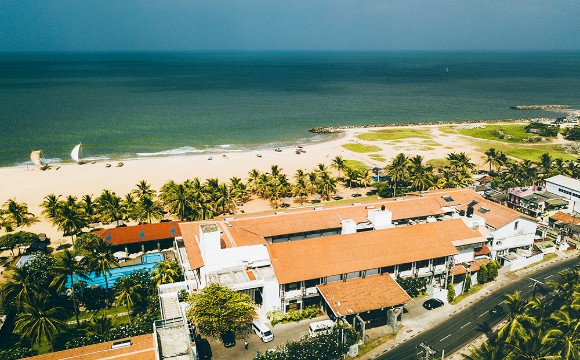
Goldi Sands Hotel, Negombo
Goldi Sands is a glamorous iconic hotel nestled on the golden beaches of Negombo. Just imagine staying in a hotel that’s right on the beach, just next to the Indian Ocean… and what a wonderful feeling knowing that the beach is all yours anytime of the day or even the night.Everything at Goldi Sands Hotels is waiting to be experienced.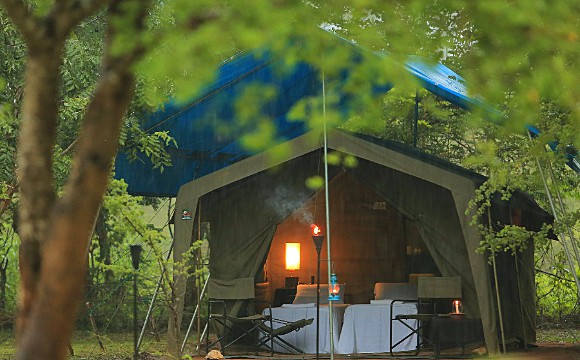
Big Game Camp, Wilpattu
Big Game Safaris are true believers in creating unique wild experiences for each of its guests in Sri Lanka. Creating awareness of the need to preserve and conserve the island’s spectacular wildlife is of vital importance, to ensure that future generations will be able to witness the astounding beauty and variety of Sri Lanka’s natural treasures.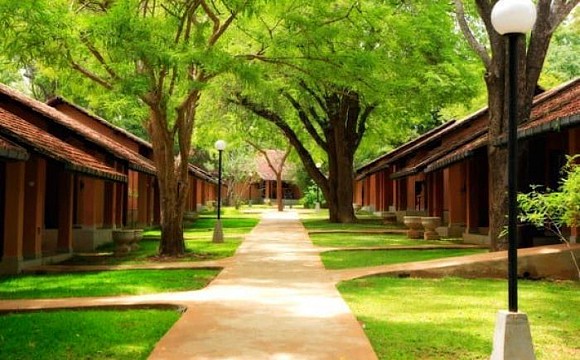
Cinnamon Lodge Habarana
Welcome to experience Cinnamon Lodge Habarana, surrounded by over 2000 trees, that are home to serpent eagles, kingfishers and monkeys alike. We love this co-existence, and so, while we take care of them, we go an extra mile and add a little personal touch to everything we do for you at our home.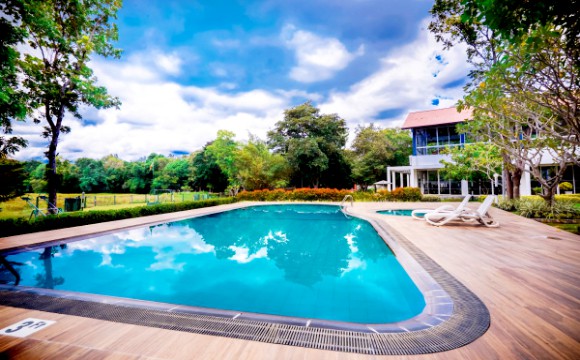
Lavendish Wild Safari, Wasgamuwa
Lavendish Wild is set amidst the lush expanses of Wasgamuwa overlooking the majestic Knuckles Mountain Range and Dunuwila Wewa. 27 star class rooms, a restaurant and pool sit in perfect unison on 3.5 acres of beautifully landscaped garden. The hotel is a haven for the wildlife enthusiast and a gateway to a number of breath taking attractions in the surrounding area.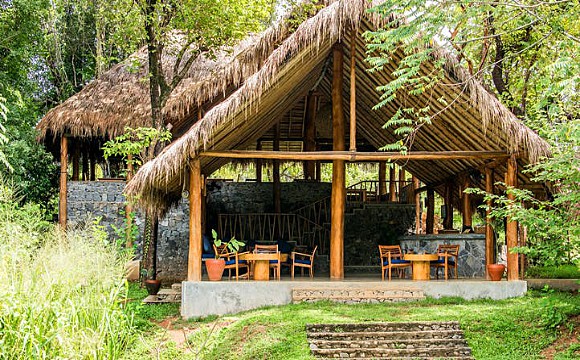
Gal Oya Lodge
Discover an ancient land untouched by time…Gal Oya Lodge is a unique Sri Lanka ecolodge spread across 20 acres of private jungle. Take your time enjoying this natural paradise through the experiences we offer, which include a walk with our Vedda neighbors, one of the last remaining communities of the forest-dwelling, indigenous people of Sri Lanka.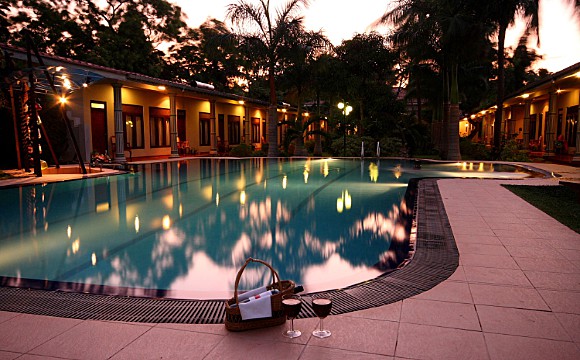
Chaarya Resort & Spa, Tissamahrama
Welcome to the charming Chaarya Resort & Spa at Tissamaharama, located 265 km from the capital city of Colombo via the Southern Expressway. Being surrounded by nature’s lush greenery and the melodious calls of the wild makes it a real ‘escape’ from the hectic urban world. Hotel is just 30 minutes from the Yala National Park, the second largest National Park in the country.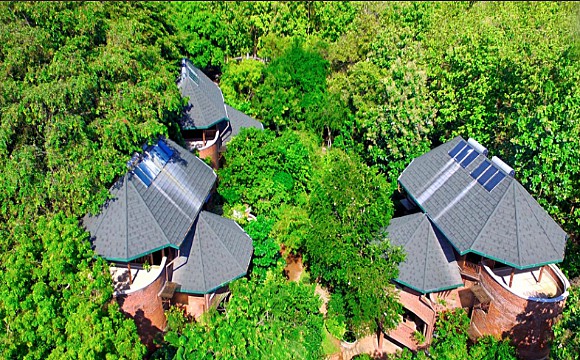
The Grand Udawalawe Safari Resort
The Grand Udawalawe Safari Resort, offering 4-star facilities, is the only hotel of its’ class in the area. This is an environmental friendly hotel, with infrastructure such as sewerage treatment plant and waste water treatment facilities. Situated on 7 acres of land, is located 163 kilometers away from Colombo, and only a five minutes drive from the Uda Walawe National Park.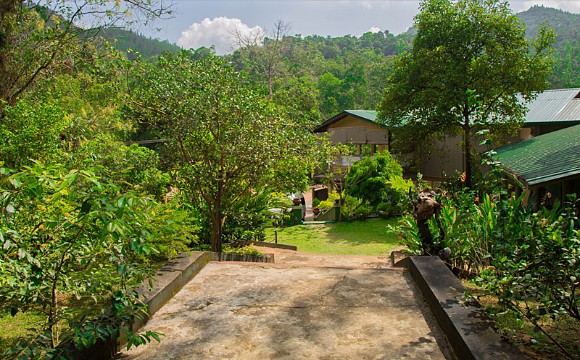
Blue Magpie Lodge, Sinharaja
The surrounding of the lodge is unique; peaceful, silent, birds humming, water flowing and the cool breeze gives us the feeling of complete relaxation. Natural cool breeze from the Sinharaja frost as well the natural stream gives a soothing sensation for Mind, Body & Soul. The Blue Magpie is inspired by the simple Sri Lankan traditional ways of living.
Cinnamon Grand, Colombo
Savor your penchant for finer comforts. Let the opulence of our rooms and restaurant seep into your beings. Raise a toast to all the success at our plush restaurants and taste jubilance like never before. When you’ve enjoyed every bit of your Grand accomplishments, retire to your room, and relish the exquisite comforts that Colombo’s most lavish business hotel has to offer.Giving back to the communities is our responsibility!
With every trip, you also support the SWAN and thus projects for Sustainable Community development and Biodiversity protection.
Our primary NGO partner is Social Welfare Association of Nepal (SWAN), with whom we have carried out multiple CSR (Corporate Social Responsibility) projects. Besides carrying out regular CSR activities in the areas of education and women empowerment, we have supported relief and rehabilitation initiatives in the aftermath of several natural disasters like earthquake, immediate response to COVID-19 pandemic across Nepal.
Giving something back to the world is a special and responsible affair of travel-to-nature Asia right from its inception. When you travel with travel-to-nature Asia and SWAN-Nepal, you become an integral force for change in addressing the most pressing social and wildlife conservation issues. Your tourism funds help transform the future of under-privileged and marginalized communities and transform the future of at-risk natural places you travel. Portion of our profit flows to local communities who live with and steward nature, creating jobs and improving livelihoods.
By joining one of our holidays you are playing a vital role in bringing positive changes in the lives of local community.




